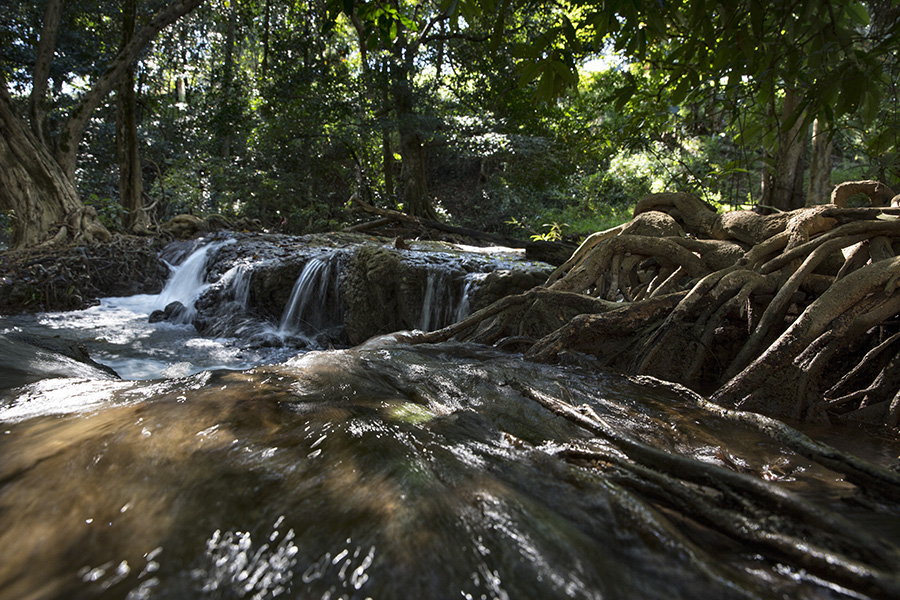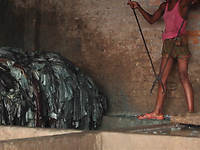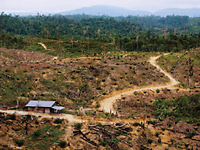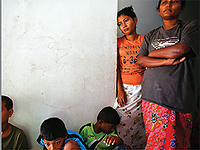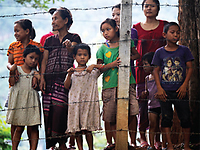Their village of Lower Klity Creek is located in Thailand’s
province of Kanchanaburi, a region known for its national parks and scenic waterfalls.
Lower Klity Creek is home to about 400 ethnic Karen people, most of whom are
subsistence farmers of rice, cassava, and vegetables.
Klity Creek meanders from mountains in the jungle, through
their village, and down to a large dam. Eleven kilometers upstream from Lower
Klity Creek village is Upper Klity Creek village, the site of a former
privately owned
lead-processing factory. The factory, which began operations in
the mid-1960s, was ordered to close in 1998. But its toxic legacy remains.
Many of the plaintiffs suffer the symptoms of chronic lead
poisoning, such as abdominal pain, fatigue, headaches, and mood changes. Some
of their children have severe intellectual and developmental disabilities. Villagers
from Lower Klity Creek are exposed to lead from contaminated water and food,
and Thai public health authorities have advised individuals in the village to
stop consuming water, fish, and aquatic animals from the creek.
The judge ruled in their favor. He found Thailand’s Pollution
Control Department—the government body charged with preventing and
resolving pollution problems—negligent for being too slow to clean up the
creek.
The department had no emergency plan after it initially became aware of the
pollution in 1998. The steps it took were beset by delays. The
department’s stated approach of “natural rehabilitation”—essentially,
waiting for Klity Creek to clean itself—would leave people exposed to
hazardous lead in their water for long into the future.
The court ordered the department to pay a total of nearly
four million baht, or US$125,000, in compensation distributed among the 22
plaintiffs. But the judge also issued a ground-breaking order. For the first
time in Thailand’s history, a superior court ordered the government to
clean up a toxic site.
The court did not direct the department how to go about the
clean-up, but it set strict conditions to make sure the department did a
thorough job: the court ordered that test results from the water, soil,
vegetables, and aquatic animals in and around the
creek must fall below the permissible levels on all four occasions over a
one-year period.
The Lower Klity Creek plaintiffs are
not the only individuals affected by the old lead processing factory. Lower Klity Creek villagers are still fighting a
civil case against the company that operated the factory (and a nearby lead
mine), Lead Concentrate (Thailand) Co. Ltd. The case was initiated by 8
plaintiffs in 2003 and was later expanded to a total of 151 plaintiffs. In 2010
the Kanchanaburi provincial court ruled in favor of the villagers, although the
defendants appealed to the supreme civil court. The case is currently awaiting
a final judgment.
While residents of Lower Klity Creek village have patiently
fought these cases through Thailand’s extremely slow justice system, people
living upstream in Upper Klity Creek village also stand to benefit from a
clean-up. Some Upper Klity Creek residents live beside the lead processing factory
or the factory’s tailings ponds (used for storing processed mine waste).
But since the supreme administrative court ruling in January
2013, the Pollution Control Department’s response has been more of the
same- limited remediation steps and delays. In March 2013, the department hired
a contracting company to take away some lead-laden soil from around the factory
in Upper Klity Creek. At the same time, the department’s director general
was quoted in Thai media, pledging a full rehabilitation plan by the end of
2013.
But by the end of 2013, the department was far from having a
plan, let alone executing it. According to the schedule drawn up by the
department shortly after the decision, studies for the rehabilitation process
should have been completed by March 2014 and actual clean-up activities begun
on May 1, 2014.
However, more than six months past the May 2014 deadline for the commencement
of clean-up activities, the Pollution Control Department is still studying how
to clean up the creek.
Even while its remediation efforts stalled, the
department’s environmental tests found unacceptably high levels of lead
in soil along the creek bank, as well as water, creek sediment, fish, shrimp,
crabs and vegetables at various locations along the creek during 2013 (the last
year with all data published).

